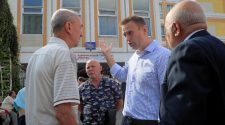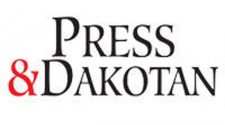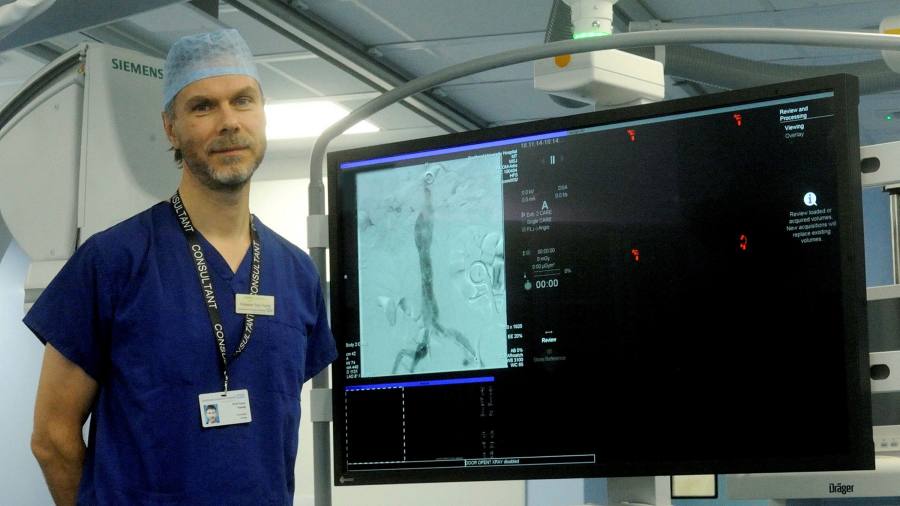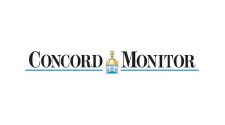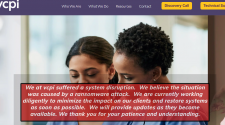Coronavirus has killed hundreds of thousands of people and has strained health systems around the world, but for Tony Young there may be a patch of a silver lining. The pandemic is accelerating use of technology to radically advance medicine and save lives in the future.
“There are so many fantastic examples of the way in which technology is empowering our patients and our professionals,” says Prof Young, a surgeon and national clinical lead for NHS England. Having launched his own medical-technology start-ups, he is helping to introduce innovations across the UK health service.
Digital tools, whether for data management and drug development or enhanced diagnosis and treatment, have sharply improved the response to the threat of infection and all sorts of disease.
Yet concerns about hype and misuse of technology threaten to limit the gains and have sparked calls for new rules and governance to protect individuals. More widely, technology has often over-promised and underdelivered.
Prof Young, from Anglia Ruskin University in Essex, points to powerful applications of artificial intelligence (AI) during Covid-19, including in “back office” logistics such as predicting hospitals’ consumption of oxygen supplies to minimise shortfalls.
More broadly, AI and machine learning are being deployed to help develop potential new drugs and to diagnose and treat patients. The UK government recently unveiled a £140m fund over three years to accelerate the testing and evaluation of the most promising AI technologies to support the NHS.
The recipients include projects that use computer analysis of CT scans to identify stroke, and early identification of polyps in the colon, that might otherwise be missed.
“We’ve talked about the genome, the proteome, the microbiome,” Prof Young says. “Now there is the digitome: how we take all that digital data about you and make predictions for diagnosis and how you might respond to the therapy we are proposing.”
He also points to the growing collection and analysis of “big data”, which helped the NHS co-ordinate large-scale clinical trials to evaluate different medicines to treat coronavirus infections, leading to the recognition of the value of the cheap steroid dexamethasone.
Yet studies that demonstrate the benefits of AI to clinicians remain scant. Many of the most widespread and important technological applications in healthcare in recent years have been more prosaic. In an example of “reverse innovation” pioneered by the company Zipline to deliver vaccines to remote clinics in east Africa, the NHS has started to experiment with drones. That has the potential to deliverCovid test samples and personal protective equipment (PPE) more efficiently and safely to where they are needed.
Greater still has been the growth in “telemedicine” consultations, as family doctors’ surgeries and hospitals limit face-to-face contact to only essential visits. An example of online discussions that can link specialists to colleagues and patients on the other side of the world is Teleheal, a British organisation that connects NHS staff to doctors in Afghanistan who are treating Covid-19.
In poorer countries, such networks offer unprecedented access to healthcare for people in remote rural areas. They also provide extra earnings for doctors in the cities, who might otherwise move abroad to increase their incomes, which would further undermine local health systems.
Important breakthroughs using technology often provide simple improvements to co-ordination and communication. Microsoft’s HoloLens, for instance, projects medical records on to goggles worn by a surgeon, who can consult other experts remotely and read machine translations of text.
Adoption has accelerated during coronavirus, allowing a single surgeon to be present while other specialists observe and provide input remotely, which saves time, economises on PPE and reduces risk of exposure to infection.
“It’s not complex but it enriches communication and the automation of processes,” says Elena Bonfiglioli, Microsoft’s managing director for Europe, Middle East and Africa region for healthcare and life sciences.
One challenge has been to win approval for the technology in the operating surgery, given that “the regulatory landscape crawls while innovation runs”, she adds.
Bitter medicine?
But advances in digitalisation of healthcare come with drawbacks. They highlight a widening “digital divide”, with highly variable access to internet and phone connections, which risks leaving behind the poorest, the elderly and others less able to use technology.
The transfer of personal health data meanwhile is fuelling a debate over who owns and controls it: the patient, the healthcare provider, the state or the companies that collect it. Sharing sensitive data — which could be used by recruiters or insurers — raises questions over individuals’ rights to privacy.
Asian countries such as China and South Korea have imposed restrictions on movement with the use of “trace and trace” phone apps. That has led to ambivalence in their uptake in the west, notably with indications that data could be passed from public health officials to the police, or sold to companies.
Concern is also growing over convergences between confidential medical data and “consumer health” applications such as fitness trackers, which are far less regulated. That raises questions of whether patients should benefit from any profit when their data is sold; and whether citizens have a societal obligation to share the data with researchers.
Beyond the emergency of coronavirus, wider progress towards a digital health service, including a “paperless NHS”, remains sluggish.
“After 18 years of failed attempts to digitally transform the NHS, you would hope that the one success that could be claimed was . . . to ensure those failures are not repeated,” Meg Hillier, chair of the House of Commons’ public accounts committee, complained recently. “Incredibly, still, none of the components essential to successful delivery of the digital ambition for the NHS are in place.”
The case studies below are a shortlist of entries to the FT Intelligent Business awards event held online on November 19, where the winner of the Healthcare award was announced.
All the entries showcase the combined use of data and tech in business operations. Source: RSG Consulting
Healthcare
Winner:
Francis Crick Institute
To bring its staff back into the office during lockdown, the London research institute’s IT team developed a platform to support Covid-19 testing using a workflow app created by US software company ServiceNow. The institute carries out up to 2,000 tests a day for frontline staff across 10 NHS trusts and about 90 care homes. The institute is collaborating with Cancer Research UK, NHS England and the Department for Health and Social Care to replicate its approach more widely.
Boston Scientific
The US medical devices maker implemented Ask Angie, a tool that uses Help Lightning’s augmented reality platform for engineers to advise on the remote set-up and repair of devices. This tool has increased in value during the pandemic by enabling hospitals to continue using devices when Boston Scientific representatives could not enter hospitals under Covid-19 restrictions. It is used for remote training and streamlines the supply chain as devices no longer have to be assembled on site by Boston Scientific staff.
Houston Methodist Hospital, Medical Informatics Corp and Intel
Houston Methodist Hospital implemented Medical Informatics Corp’s Sickbay platform with Intel hardware to create a virtual intensive care unit. Patients in hospital beds are connected to machinery that is monitored from a remote office, where a team of physicians and nurses can track patients on video screens and speak to them via video call. The software uses machine learning to flag which patients are higher risk and will need to be attended to. Cameras at a patient’s bedside work in the dark and can see details such as dilated pupils and text labels on medicine bottles. This has reduced exposure to infection and makes it possible for a regular bed to be turned into a virtual intensive care bed in a few minutes by plugging in the appropriate technology.
Imperial College Healthcare NHS Trust and Microsoft Health
Doctors at the NHS trust in London implemented Microsoft’s HoloLens, which uses holograms to create a “mixed reality” integrated with the video conference platform Microsoft Teams, to enable remote treatment of Covid-19 patients. The technology cuts the number of physicians needed on the ward, reducing the use of PPE at the five hospitals where it was rolled out. The system also automates prescription requests and booking for Covid tests. The HoloLens devices were introduced in one month, helped by the NHS rolling out Teams a week after the pandemic hit the UK. To simplify information governance and speed up implementation, the device records no patient data.
Oxford University Hospitals NHS Foundation Trust and Nuance Communications
In 2018, this UK NHS trust introduced voice recognition software across the organisation from US-based AI company Nuance Communications to transcribe consultations into the forms physicians fill out for each patient. The software works through a microphone or app on the doctor’s mobile. It is used by doctors in more than 50 departments where it has been introduced, reducing turnround time for clinical letters from 10 days to three and saving more than half the costs for outsourcing transcription and printing of letters, as well as freeing up time for patient care.
Healthcare category research and award supported by Pinsent Masons

